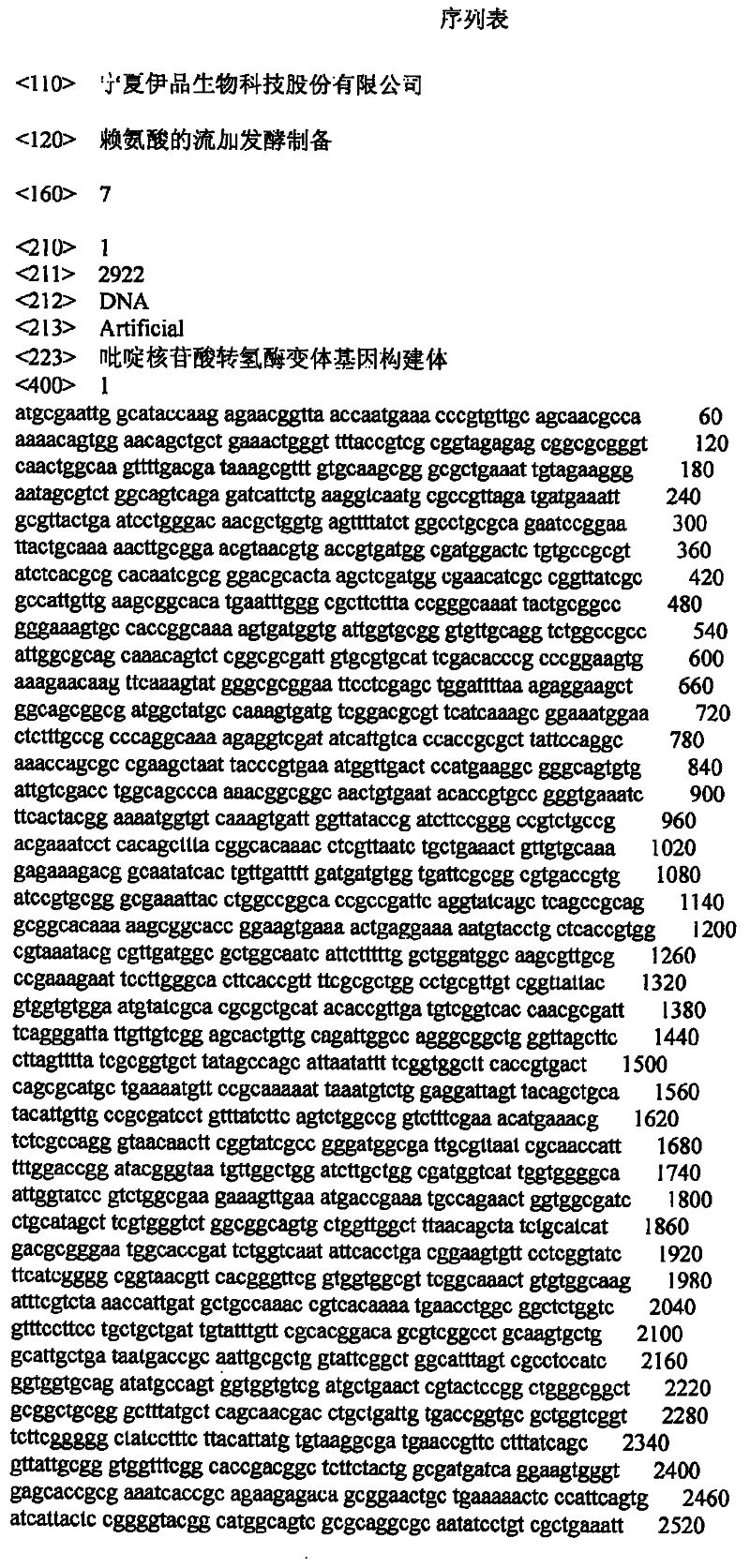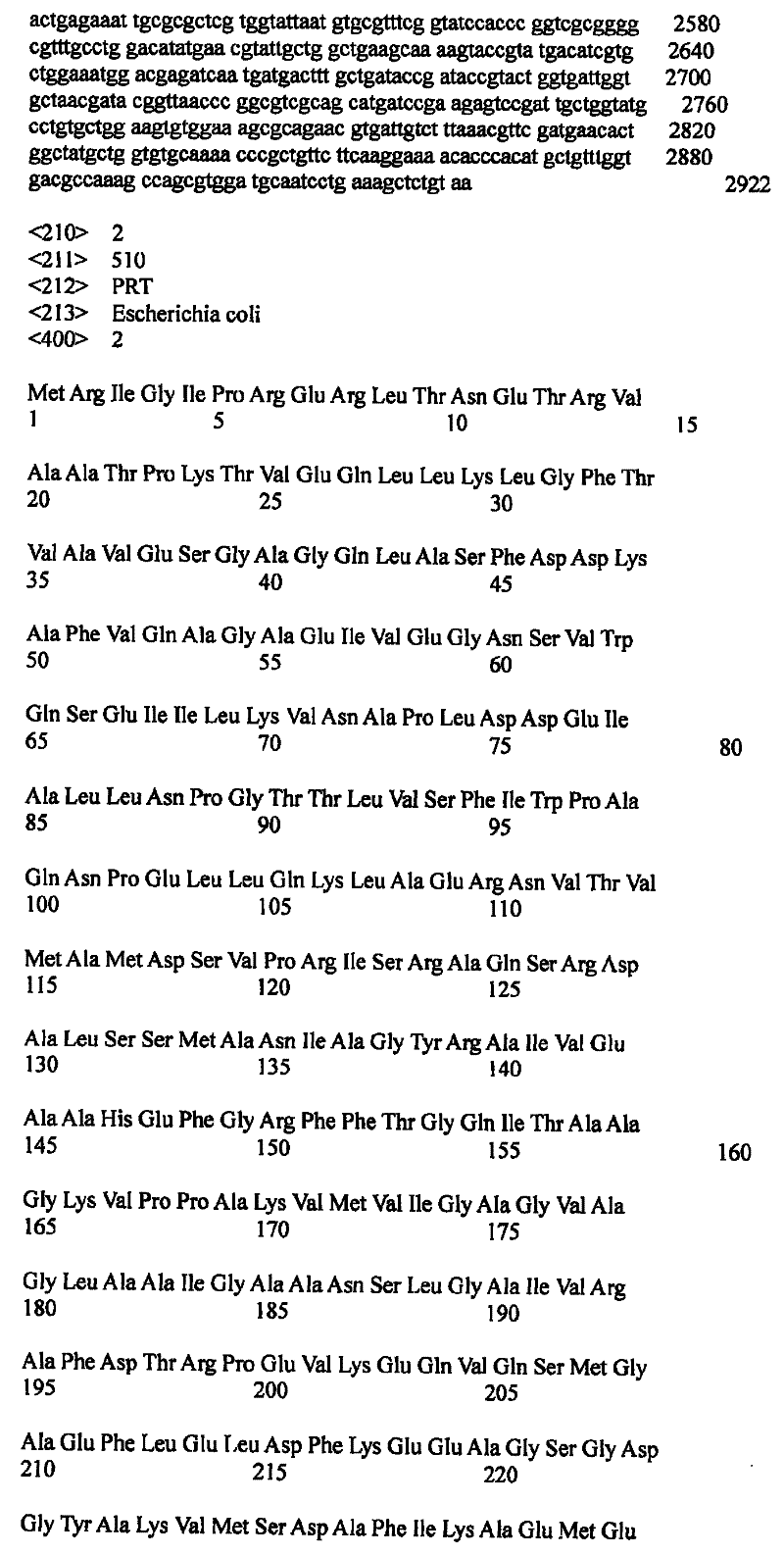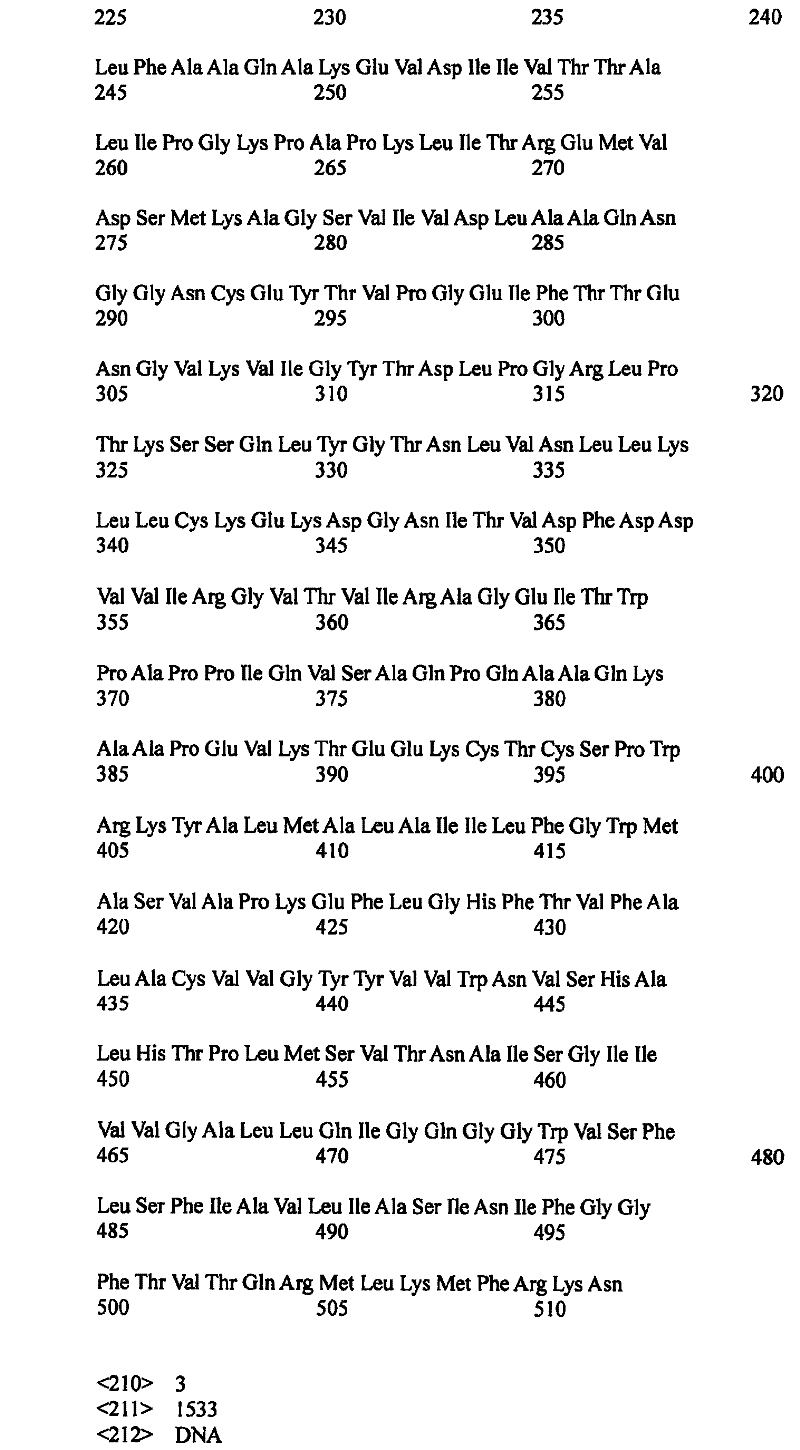Fed-batch fermentation preparation of lysine
A technology of fed-feed fermentation and lysine, applied in the field of amino acid fermentation, can solve the problem of no report on enzyme variant research, and achieve the effects of increasing fermentation yield, increasing yield and simplifying operation.
- Summary
- Abstract
- Description
- Claims
- Application Information
AI Technical Summary
Problems solved by technology
Method used
Image
Examples
Embodiment 2
[0032] The activity assay of embodiment 2 escherichia coli and the fermentation experiment of coryneform bacterium
[0033] According to the existing assay method for transhydrogenase activity (see Clarke DM et al. Cloning and expression of the transhydrogenase gene of Escherichia coli.J.Bacteriol., 162:367-373), E.coli transformed with pMS2-cispnt plasmid -cispnt bacterial strain and the negative Top10F' bacterial strain as a control measure the transhydrogenase activity respectively, and the specific enzyme activity of the found E.coli-cispnt bacterial strain is 163% higher than that of the negative Top10F' bacterial strain, much higher than the prior art Enzyme specific activity increase rate with wild-type pyridine nucleotide transhydrogenase expressed in .
[0034] The pMS2-cispnt plasmid is transferred to L-lysine-fermenting coryneform bacteria engineering bacteria (available from the American Type Microorganism Collection (ATCC), product number ATCC 31269) by electropor...
Embodiment 3
[0036] Fed-batch fermentation example 1 of embodiment 3L-lysine
[0037] The conversion of embodiment 2 has the coryneform bacterium engineering bacterium of pMS2-cispnt plasmid with 0.5% inoculum size and inserts 20 cubic meters of fermentors (wherein the substratum formula is: 600 kilograms of glucose, 200 kilograms of sugarcane molasses, 520 kilograms of corn steep liquor , KH 2 PO 4 45 kg, MgSO 4 ·7H 2 O 7 kg, FeSO 4 ·7H 2 O 0.5 kg, MnSO 4 ·7H 2 (0.5 kg, 12 grams of biotin, and 5 grams of folic acid, fixed to 18 cubic meters with water), cultured at 35° C. with saturated aeration for 15 hours to increase the cell density.
[0038] Then, directly inject the nutrient solution of 20 cubic meters of fermentation tanks into 350 cubic meters of fermentation tanks (wherein the medium formula is: 12000 kilograms of glucose, 1000 kilograms of sugarcane molasses, 12000 kilograms of corn steep liquor, KH 2 PO 4 1000 kg, MgSO 4 ·7H 2 O 100 kg, FeSO 4 ·7H 2 O 12 kg, MnSO ...
Embodiment 4
[0039] Fed-batch fermentation example 2 of embodiment 4L-lysine
[0040] Basically the same as in Example 3, the difference is that the culture solution of the 20 cubic meter fermenter is directly injected into the 350 cubic meter fermenter, and cultured at 39° C. for 3 hours with saturated aeration. Then, 1100 kilograms of glucose was fed per hour for 15 hours; after that, 1500 kilograms of glucose and 700 kilograms of ammonium sulfate were fed per hour for continuous fermentation for 55 hours. Thin-layer chromatography detected that 128 g / L of L-lysine was produced.
PUM
 Login to View More
Login to View More Abstract
Description
Claims
Application Information
 Login to View More
Login to View More - Generate Ideas
- Intellectual Property
- Life Sciences
- Materials
- Tech Scout
- Unparalleled Data Quality
- Higher Quality Content
- 60% Fewer Hallucinations
Browse by: Latest US Patents, China's latest patents, Technical Efficacy Thesaurus, Application Domain, Technology Topic, Popular Technical Reports.
© 2025 PatSnap. All rights reserved.Legal|Privacy policy|Modern Slavery Act Transparency Statement|Sitemap|About US| Contact US: help@patsnap.com



